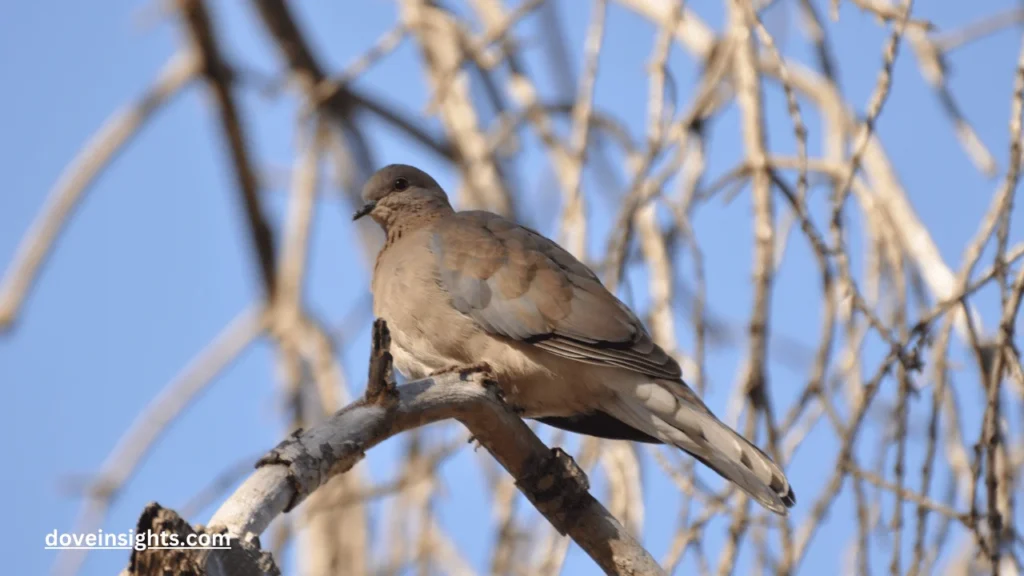The soft, haunting coo of a mourning dove is one of nature’s most recognizable and soothing sounds. Whether drifting through the morning mist or serenading the twilight hours, their calls seem to carry messages that resonate deeply with human listeners.
But have you ever wondered, what prompts these gentle birds to coo? Is it a simple song, or does it hold deeper meaning in their lives and behavior?
Mourning doves don’t coo just for the sake of melody. Their coos are communication tools, used to signal everything from mating readiness to territory establishment.
Understanding when and why mourning doves coo offers a fascinating glimpse into their world and enriches our appreciation for these beloved birds.
In this article, we will explore the timing and purpose of mourning dove coos, the different contexts in which they occur, and what these sounds can tell us about their behaviors and emotions.
By the end, you’ll not only recognize their coos but also understand their significance, adding depth to your birdwatching experiences.
Contents
The Purpose of Mourning Dove Coos
Mourning doves rely on their gentle coos as a primary means of communication. These vocalizations are not random; they serve specific purposes that are vital to their survival and reproduction.
- Communication in the Wild: Mourning doves use their coos to interact with other doves, sending signals about their intentions. Whether it’s to indicate safety, call for a mate, or warn others of danger, these sounds are a language unique to their species.
- Territorial Signaling: Male doves are particularly vocal when establishing and defending their territory. Their persistent coos let others know that a specific area is claimed and warns potential intruders to keep their distance.
- Mating Calls: During the courtship phase, male mourning doves coo tirelessly to attract a mate. This behavior showcases their vitality and readiness to provide, playing a crucial role in pair bonding.
Section 2: Mourning Dove Daily Rhythm
The daily rhythm of mourning doves is closely tied to their cooing behavior, which follows a pattern influenced by their biological needs and environment.
- Morning Activity: Mourning doves are most vocal during the early hours of the day. Dawn coos are used to mark territories and attract mates, making mornings an ideal time to observe their vocalizations.
- Cooing Patterns: Throughout the day, the frequency and tone of coos vary depending on the dove’s activity levels. Their calls might become softer or more spaced out during times of rest or feeding.
- Evening Quietness: As twilight approaches, mourning doves become less vocal, preparing for roosting and safety through the night. This reduction in cooing reflects their shift toward rest and protection.
Seasonal Cooing Patterns
The seasonal variations in mourning dove cooing provide insights into their breeding and migratory behaviors.
- Breeding Season Coos: During spring and summer, when mourning doves are actively nesting and mating, their coos are louder and more frequent. This is the peak season for territorial and courtship vocalizations.
- Winter Silence: In colder months, their focus shifts to survival, and cooing decreases significantly. The quietness during winter contrasts with the vibrancy of their spring and summer songs.
- Migration and Movement: Some mourning doves migrate, while others remain in the same region. These differences can lead to regional variations in cooing behaviors, as migrating doves prioritize finding suitable wintering grounds.
Environmental Influences on Cooing
The environment plays a crucial role in shaping the cooing habits of mourning doves, from their surroundings to weather conditions.
- Urban vs. Rural Settings: Mourning doves in urban areas adapt their calls to compensate for noise pollution, while those in rural areas enjoy quieter environments that allow for more natural communication.
- Weather and Climate: Temperature, humidity, and seasonal changes influence the frequency and clarity of their coos. For example, rainy days may lead to quieter periods as doves seek shelter.
- Human Interaction: Proximity to humans, bird feeders, and other artificial environments can encourage more frequent cooing, as doves feel safer and more supported in these spaces.
How to Observe Mourning Dove Coos

For birdwatchers and enthusiasts, understanding how to observe mourning doves enhances the experience of hearing their soothing coos.
- Best Times for Listening: Early morning and spring are the prime times to hear mourning dove coos. Their vocalizations are most prominent during these periods, offering a melodic start to the day.
- Creating a Dove-Friendly Environment: To attract mourning doves to your yard, provide platform feeders, clean water sources, and sheltered areas. A welcoming habitat ensures a closer connection to their behavior.
- Understanding Variations: Recognize that no two doves sound the same. Their individual cooing styles reflect personality, age, and environmental influences, adding depth to your observation.
Conclusion
Mourning doves coo not just as a beautiful melody but as an essential means of communication. From marking territory to courtship and responding to their environment, these vocalizations reveal a rich and complex behavior that is deeply tied to their survival and reproduction.
By understanding their daily rhythms, seasonal changes, and environmental adaptations, you can develop a greater appreciation for the soft, comforting calls of mourning doves. As stewards of nature, we have the opportunity to create environments where these birds can thrive, enriching our connection to the natural world.
FAQ’s
What does the cooing of a mourning dove mean?
Mourning dove coos are used for communication, including courtship, marking territory, and signaling safety or danger.
When are mourning doves most vocal?
They are most vocal during the early morning hours and during the spring breeding season.
Do male and female mourning doves coo differently?
Yes, males are generally more vocal, especially during courtship and territorial displays, while females are quieter.
Can mourning doves change their cooing patterns?
Yes, their cooing frequency and tone can vary based on the time of day, season, and environmental conditions.
Do mourning doves coo year-round?
Mourning doves coo less frequently during winter, focusing more on survival than on mating or territorial displays.
How can I attract mourning doves to hear their coos?
Provide food, water, and shelter in your yard, creating a safe and inviting environment for them.








